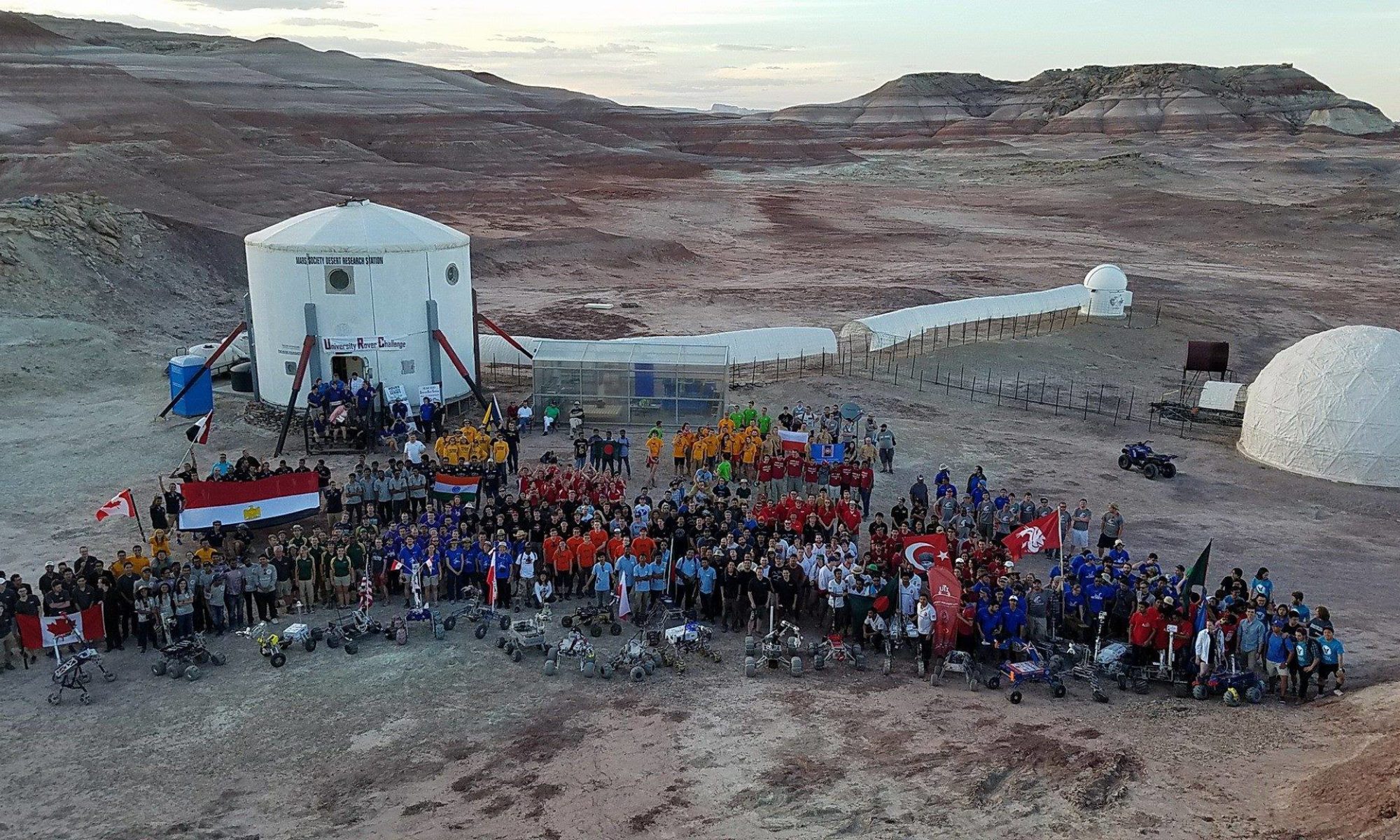Crew 261 Journalist Report 12-05-2023
Author: Kris Davidson, Crew Journalist
Earth and Mars pirouette around the sun in a cosmic dance covering mind-boggling distances. Two cosmic dancers, they swing close and then recede. The distance between Earth and Mars varies depending on their positions in their respective orbits around the Sun. At its closest approach, Mars is about 54.6 million kilometers (33.9 million miles) from Earth. At its farthest, the distance can be over 400 million kilometers (249 million miles).
Yet, distance isn’t merely a spatial concept. If we think of time as a flowing river, then each moment is an island in that river, each separated from the others by the relentless current of time. Consider standing at MDRS, your feet grounded in the same soil, separated not by miles but by millennia. Some 145 million years ago to 150 million years ago, dinosaurs roamed this landscape, the remnants of their existence still being unearthed by paleontologists working at the nearby Hanksville-Burpee Dinosaur Quarry. The same latitude and longitude, yet a chasm of a million years stretches between them. The temporal distance between these moments is profound and poignant, a vivid demonstration of how time itself is a kind of distance, no less real than the vast expanse between Earth and Mars.
Finally, there is another kind of distance, one not easily measured — the emotional distance between human beings. Not the unfathomable gulf between celestial bodies, nor the temporal chasm between epochs, but the distances that ebb and flow between souls.
On Sol 12, the crew’s final Sol on Mars, Commander Burk and Executive Officer Aline Decadi executed a rescue drill (carried out on EVA 19), unbeknownst to the rest of the crew. Once they sent the “assistance needed” signal over the garmin device, the crew at the hab went to work to close the distance, not knowing the nature of the call as comms had been lost. It ended up being a physical distance of 2 kilometers between the hab and the EVA crew, a gap that was closed in 22 minutes. The emotional distance during those 22 minutes can only be described as charged. After two weeks, we have all become good friends, and the concern while in the blind was real and raw.
Distance, in the end, is a paradox. It isn’t static. It separates and unites, isolates, and connects. Today marks Sol 12 for Transatlantic Mars Crew 261, the final day of our simulation. At 1800, we will exit our Mars habitat, shedding our spacesuits to reconnect with Earth’s environment. The distance is inconsequential, this traverse from Mars back to Earth occurring in an instant, with words spoken by Commander James Burk. We will leave here with memories and our shared story of time on Mars.
Anthony de Mello famously said that “the shortest distance between a truth and a human being is a story.” Stories serve as bridges, closing the gap between hearts and minds, weaving threads of understanding where misunderstanding once prevailed. Every sim carried out at MDRS can be thought of as a story, with the goal of bridging distances in understanding of what human-to-mars is all about. Throughout our Mars mission, we have fostered friendships destined to endure and contributed to the vast body of knowledge propelling humanity towards a future on Mars. Tomorrow, on an Earth day, we will begin our homeward journeys. The physical distances between us will become tangible once more, but the shared memories of our time on Mars will ensure that reconnection is only a thought away. Our collective story about our time on Mars will continue to bind us, regardless of the miles that separate us.
With immense gratitude, we are Transatlantic Mars Crew 261, signing out:
James Burk (Crew Commander)
Aline Decadi (Executive Officer + Crew Geologist)
Cécile Renaud (Greenhab Officer + Crew Biologist)
Julien Villa-Massone (Crew Engineer)
Erin Kennedy (Crew Robotics Engineer)
Audrey Derobertmasure (Health + Safety Officer)
Kris Davidson (Crew Journalist)

